about the writer
Ian Douglas
Ian is Emeritus Professor at the University of Manchester. His works take an integrated of urban ecology and environment. He is lead editor of the "Routledge Handbook of Urban Ecology" and has produced a textbook, "Urban Ecology: an Introduction", with Philip James.
Introduction
However, the people who manage and care for urban nature and community access to, and engagement with, the urban blue and green spaces; those who develop policies for urban greening; and those carrying out research into urban ecology are themselves affected in their work and activities by COVID-19 lockdowns and related impacts. This Global Roundtable permits a range of these people to give their personal views of how COVID-19 has affected what they do in relation to urban nature.
At its April 2020 meeting the UK Urban Ecology Forum decided to compile a list of reactions to COVID-19 from its members and from the contributors to the Second Edition of the Routledge Handbook on Urban Ecology, the Forum’s major publication. The Forum asked people to provide a brief report on current urban ecology/ urban parks/ green infrastructure activity and present and future impacts and opportunities for that work arising from the COVID-19 pandemic. Respondents were asked to provide 100-150 words describing their current work, research or project and a further 100-150 words describing how this activity is changing, or will change, as a result of the COVID-19 pandemic, and any links to the desperate need for action to the climate emergency and the extinction crisis, with comments on any new opportunities that were likely to open up.
The UK Urban Ecology Forum is a network of people, including ecologists, artists, managers, planners and researchers, involved with the environment and nature conservation in urban areas. It seeks to: raise awareness; stimulate research; influence policy; improve the design and management of urban systems; and push urban nature conservation up the social and political agenda. It was established to provide advice to the nature conservation bodies of the four countries of the United Kingdom under the leadership of the late George Barker, formerly the Urban Nature advisor to English Nature (Natural England). It has produced influential guidance on urban greenspace policies and practices, particularly on standards for accessible natural greenspace in town and cities and on the need for standards that can help to achieve high quality adapted and attractive green spaces that people will want to use and will therefore help them get to know their neighbours and build stronger communities.
Many of the Forum’s members are also contributors to the Handbook of Urban Ecology The other contributors to the Handbook of Urban Ecology also come from a wide range of backgrounds and from countries in all continents. The editors had a deliberate policy to try to achieve a nationality and gender balance. Their experiences are governed by the particular expertise on aspects of the urban environment and by the cultures and practices of the places where they live and work. Several work outside their countries of residence and have been particularly constrained in what they can do by lockdown regulations in more than one country
Those managing urban greenspaces note that while volunteer work has virtually ceased and no one is available to deal with invasive species such as Himalayan balsam, some important major projects can be finalised (Mark Champion; Richard Salisbury UK). In London (UK) Tim Webb sees that society has cleverly transformed parks into a crucial element of our lives as places where we can both distance ourselves from others, while simultaneously coming together as communities. Patrick Lydon (Japan) shows how the pandemic has led to new types of virtual art exhibitions on urban ecological themes.
For many engaged in interaction with the community, project progress is hampered by not being able to hold face-to-face meetings (Phil Wheater and Pete Frost, Wales, UK). However, plans are being made elsewhere for workshops and interviews with communities of stakeholders to learn, analyse and assess their present state of confidence after the pandemic, and their future vulnerability, resilience and prospects (David Haley, UK). Natural England’s People and Nature Public Survey will endeavour to capture visiting and engagement with greenspaces and nature in response the COVID-19 measures (Jane Houghton, UK).

For the future, the hardship of confinement to apartments or houses without gardens may, according to Mike Wells (UK), increase the drive for the provision of biodiverse and biophilic habitats for people both in the public realm and on buildings. Alan Scott (UK) sees the challenge facing nature conservation being to take this increase in interest and turn it into long term support. Stephan Pauleit (Germany) stresses that changes in public behaviour in response to crises will have to be more thoroughly considered in future planning. Richard Scott (UK) argues that new international urban accessible natural greenspace standards should combine carbon capture, and biodiversity, and creative conservation delivery, and make urban greening a transformative global movement.
Some researchers are asking questions on how the influence of COVID 19 on demographic and income factors (preferential deaths of old men, significance of deprivation, ill-health and ethnicity in vulnerability to the pandemic) may aggravate inequality and energy and food poverty (Joy Clancy, Netherlands; Manuel Lopez de Souza, Brazil). Others have messages for the future such as how urban and peri-urban agriculture may increase urban food security both in times of crisis as well as a long-term solution (Christian Isendahl, Sweden). There are also questions about how efforts to shield older people may inadvertently make them more exposed to very high temperatures (Sarah Lindley (UK). Fundamental questions remain about how microbiota in human immune systems relate to urban environment and to human resistance or susceptibility to COVID-19 (Graham Rook, UK).
For academic researchers the chief issue is being unable to carry out field work: Ida Breed (South Africa; Philip James (UK); Nancy McIntyre, Miriam Smith, and Katalin Szlavecz (USA), However, some recognise fascinating new questions, such as how does COVID-19 affect the behaviour of urban birds and their predators? (Piotr Tryjanowski, Poland).
about the writer
Camilo Ordóñez
Camilo is a research associate at the University of Toronto. His interdisciplinary research is about the social and ecological issues of nature in cities. He works in Canada, Latin America, and Australia.
Camilo Ordóñez Barona
Possible Future Changes: During the COVID-19 pandemic lockdown measures, people had limited access to parks and greenspaces with trees. As people’s use of parks and greenspaces with trees changed due to physical distancing measures, we are adapting our research to consider previously unexpected changes in people’s behaviour in these spaces. Nevertheless, our research generates knowledge that will help improve the cities we live in by enhancing the social and biodiversity benefits that urban greenspaces with trees provide. This is increasingly important in a post-COVID19 world, as people try to recover, or find new ways to enhance, their social and psychological resources through increased contact with urban nature.
about the writer
Marcelo Lopes de Souza
Marcelo Lopes de Souza is a professor of socio-spatial development and urban studies at the Department of Geography of the Federal University of Rio de Janeiro.He has published ten books and more than 100 papers and book chapters in 6 languages
Marcelo Lopes de Souza
The research project corresponds to the analysis of the conflicts around environmental justice that have emerged in several Brazilian cities during the last twenty years as a result of incompatible land uses and goals: more specifically, as a result of the clash between popular demands for adequate housing and a humane quality of life, on the one side, and some particular capitalist interests or government projects (related to the location of polluting industries or waste incinerators close to working-class residential areas, or as a result of ‘green evictions’), on the other side.

The research project’s coordination has been affected in two different ways by the current COVID-19 pandemic: first of all, because fieldwork has become impossible due to social isolation measures and self-quarantine; secondly, because the interface between environmental injustice and public health becomes even more evident, so that it will be surely more emphasised.
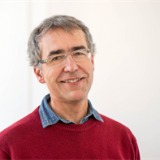
about the writer
Stephan Pauleit
Stephan is an academic landscape planner at the Technical University of Munich where he currently directs the Centre for Urban Ecology. He has a strong interest in urban green infrastructure planning and research on the growth and functioning of urban trees deeply fascinates him.
Stephan Pauleit
The project explores ways to better integrate green infrastructure for climate change mitigation and adaptation into the current planning processes for urban densification. Munich, capital of Bavaria, which experiences strong growth, is chosen for this transdisciplinary project where academics from landscape planning, architecture, social sciences and economics collaborate with planners and environmental experts from the city administration.
This research is about promoting resilience to cope with extreme climatic events. In line with this, I think COVID 19 highlights the need to consider that human behaviour may rapidly change in times of crisis and that the value of green spaces may increase a lot. Or similar. I just thought that it is not about behavioural change alone (i.e. needing more space around you) but also that value of green open spaces where you can walk freely and meet if allowed became so obvious during this epidemic.
For instance, people suddenly need more open space to keep at a distance. What does this mean for green space standards which, I guess, are based in a rather static view on what people need in terms of green space provision? How can they better take on board extreme events and resilience thinking?
about the writer
Patrick M. Lydon
Patrick M. Lydon is an American ecological writer and artist based in Korea whose seeks to re-connect cities and their inhabitants with nature. He is an Arts Editor here at The Nature of Cities.
Patrick M. Lydon
Our ecological art exhibitions with the “Typhoon Queens” in Kyoto was canceled just days before we were set to open, due to COVID-19. We went ahead virtually instead, building a new virtual platform within a matter of days. The artists installed the show and substituted an in-person audience for an “online” audience, thanks to The Nature of Cities’ new virtual galleries at the Urban Ecological Arts Forum. Over 700 people attended the virtual opening, far more than would have fit within the physical gallery space itself.
The Urban Ecological Arts Forum at The Nature of Cities is making a commitment to bring to life virtual exhibition spaces, highlighting current transdiciplinary exhibitions on urban ecological themes, that would otherwise be impossible to experience due to the closure of cultural facilities. We are expanding this work to support more spaces in more countries.
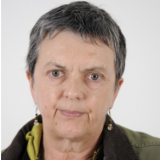
about the writer
Joy Clancy
Joy has a PhD in Engineering (alternative fuels for small stationary engines). She joined the University of Twente in 1989. Joy’s research has focused, for more than 30 years, on the social dimension of small scale energy systems for developing countries. Gender and energy has been an important factor addressed in this research.
Joy Clancy
My current work is applying learning from the Global South about gender and energy poverty in the context of the North with the intention of drawing policy makers attention to issues they appear not to recognise by providing evidence and policy recommendations. Encouraging women’s participation in the energy transition in diverse roles as entrepreneurs, employees, policy makers is also a field of interest. Within a community of gender researchers we are examining how we do gender and energy research, for example what we count and how we count it.
COVID-19 has an influence on demographics and on income which both are factors in energy poverty. Women in the retirement age group in Europe, due to a gender earnings gap at an earlier stage in the life cycle, are more like to live in income poverty than men. This situation is exacerbated by women’s longer life expectancy than men. Male mortality as a consequence of viral infection seems to be significantly higher than for women. Age also is a factor. The increased viral mortality of older men leaves a larger group of women without sufficient income to pay energy utility bills. In terms of those in employment, women dominate the service and retail industries in which job losses been high. We need to know how these effects are influencing energy poverty and whether the measures taken to address the effects of the virus are also biased against people experiencing (enhanced) energy poverty.
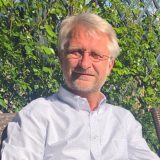
about the writer
Piotr Tryjanowski
Piotr Tryjanowski is a full professor at Poznan University of Life Sciences; his research focus on ecology, One Health concept, climate and urbanization processes.
Piotr Tryjanowski
For 10 years (or more) I have studied bird communities in Poznán (Poland), focused on differences according to urbanization gradient (from rural places, to glass-plastic city centres). I study mainly birds, but also collected data on some mammals, not only on densities, and species behaviour, but also on changes in behaviour. It was funded by several national and international grants.
I see a lot of potential opportunities. The lockdowns have affected people, but how affected are birds? There are two possibly different scenarios: back to wild, or a second, lack of habituation, because less people. I also measure sounds level in the city—in the same places since 2017—and it looks as if there is a big change. How COVID-19 may also affect not just small birds and people, but also predators (hawks, cats)? Another fascinating story.
What are our “desperate needs”? We need really good research.
about the writer
Yun Hye HWANG
Yun Hye Hwang is an accredited landscape architect in Singapore, an Associate Professor in MLA and currently serves as the Programme Director for BLA. Her research speculates on emerging demands of landscapes in the Asian equatorial urban context by exploring sustainable landscape management, the multifunctional role of urban landscapes, and ecological design strategies for high-density Asian cities.
Yun Hye Hwang
This research aims to develop landscape management strategies to reconcile the discrepancies between the economic and biodiversity values of less-manicured urban greenery. Specifically, this research engenders the following research questions: What are the relationships between the various types of landscapes and resource consumption/maintenance intensity? What landscape interventions attain the greatest resource savings at a minimum cost while contributing to urban biodiversity?
The research objectives are: to quantify required resources of various types of maintenances from initialization, installation to operation and maintenance; to analyse/compare the cost benefits of less-manicured landscapes vs resource intensive maintenance; to estimate cost and ecological benefits of multiple landscape scenarios.
Ecological and economic benefits of a more naturalized maintenance regime could not only provide benefits to the urban nature and national economy, but also to the human health and energy efficiency. This regime could result in ecological resilience and resource independence of cities through the reduction of labour intensive and non-essential inputs, as well as less carbon emissions on the long run. The pandemic opens new opportunities for landscape architects to care about resource optimization as a core strategy in the design and management of urban green spaces.
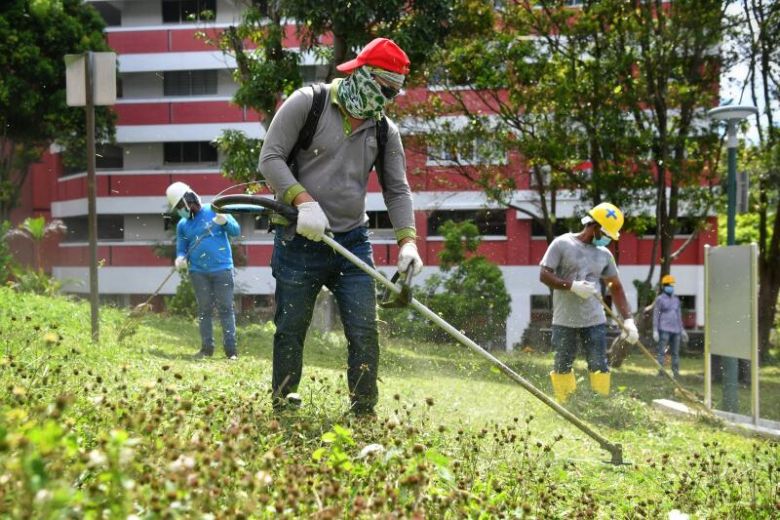
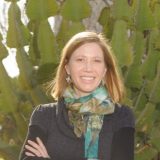
about the writer
Christina Breed
Christina (Ida) Breed is a senior lecturer in the Department of Architecture in the University of Pretoria. Her research is concerned with open space design and how it relates to natural and cultural contextual issues and identity. Her research demonstrates the importance of the landscape design as part of green infrastructure, urban ecology and social-ecological resilience. She is trained in urban ethnography and makes use of qualitative research methods.
Christina Breed
The research project consists of small patches of native grassland plant assemblages implemented as a design experiment in two urban areas in the City of Tshwane. The aim of the project is to monitor the comparative effect of native versus non-native grassland species on providing urban ecosystem services (ES) and functions, and support for biodiversity. This has not been previously tested in urban areas in South Africa and can assist landscape architects and designers in providing ES through urban green space implementation.
Current research activities include the monitoring of arthropod activity (biodiversity), plant cover (functions) and stress (tolerance), and visitors’ perceptions (sense of place).
Lockdown restrictions have influenced access to the premises of the gardens which affected the seasonal monitoring periods that were predetermined. Some studies on pollinator movement between patches and microclimatic effects on arthropod activity were completely cancelled for 2020. Insect monitoring scheduled for July can proceed.
Interviews scheduled for April/ May when vegetation cover is usually at its maximum, could not take place, because no visitors have been freely allowed on the premises since lockdown started on 26 March. Telephonic interviews are not considered as a viable alternative, because the physical experience of the gardens on visitors is considered important. Interviews will be rescheduled for November, if visitors are again moving freely by then. As parks remain closed after three months and will most likely remain so all winter, it would be interesting to hear if people’s general appreciation of access to urban green open space increase as a consequence.
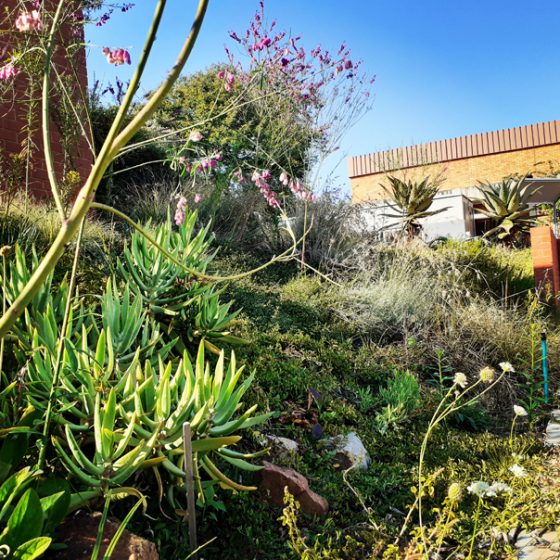

about the writer
Christian Isendahl
Christian is Professor of Archaeology, Dept of Historical Studies, University of Gothenburg. His main research specialization is the prehistory of the Lowland Maya of Mexico, Guatemala, and Belize.
Christian Isendahl
My research can be broadly characterized as an integration of applied archaeology and historical ecology that ultimately aims to generate practical insights for addressing contemporary challenges, particularly urban food security and sustainability. The geographical focus is Latin America, over the last decade particularly in the Maya Lowlands, in the Amazon, and in Cuba. My research is interdisciplinary, and providing the long-term and comparative perspective of archaeology I work together with urban scholars, geographers, soil scientists, agronomists, etc in integrated past–future research.
I think that the main messages of the research I am doing—how urban and peri-urban agriculture may increase urban food security both in times of crisis as well as a long-term solution—has become even more urgent and evident in the challenges of COVID-19 pandemic. I find that the archaeological record lends support to the idea of urban food commons as well as the need to safeguard local food systems.
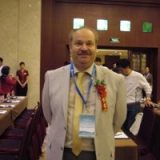
about the writer
Mark Champion
Mark has 35 years’ experience of Nature Reserve management, 15 with the RSPB and 20 with the Lancashire Wildlife Trust where his main concern is managing and designing wetland on post-industrial sites.
Mark Champion
Much of our recent work has been multiple benefits work on reducing flood risk within the urban landscape by using the wetlands to provide ecosystem services.
Community work has been severely reduced and there is little formal consultation and capacity development. Arts projects have been curtailed. Citizen Science recording has been suspended, as have training courses for our volunteers. However conservation work is continuing and has included finishing some funded capital projects. Staff led surveying has been modified to fit the criteria set out by the UK government.

about the writer
Ian Douglas
Ian is Emeritus Professor at the University of Manchester. His works take an integrated of urban ecology and environment. He is lead editor of the "Routledge Handbook of Urban Ecology" and has produced a textbook, "Urban Ecology: an Introduction", with Philip James.
Ian Douglas
Since 2016 I have been the lead editor of the Handbook of Urban Ecology initiated by the UK Urban Ecology Forum. The work has been done in my retirement, from my home. However, it has involved fantastic collaboration with contributors from 37 different countries. Through the Commonwealth Human Ecology Council, I have helped in the setting-up of a small pilot project in Uganda to help young unmarried mothers train to become beekeepers and entrepreneur honey producers. As Chairman of the Human Ecology Foundation, I helped to secure some funding for the project.

For the Manchester Geographical Society, my wife and I help to write guides for local excursions for the Exploring Greater Manchester series. We have recently completed guides to West Didsbury and Chorlton. I am due to revise the excursion entitled: “Urban floodplains and slopes: the human impact on the environment in the built-up area” which was last revised in 2006.
My wife and I decided to self-isolate on 14 March and we have not left our house and garden since then. While it is annoying not to be able to revisit the floodplains and slopes areas, particularly to check in river channel changes and newly designed multi-functional flood basins with considerable urban ecology benefit, our large garden with part of the remains of a 200-year old woodlands, gives us plenty to do and inspiration for thinking about wider urban ecology issues.
However, the young women beekeepers have had their training interrupted. Their project supervisor and local expert appraiser are unable to travel from Kampala to the project location in eastern Uganda. We have had to find some extra funds to meet the costs of assistance from other apiarists who live closer to the women in eastern Uganda.
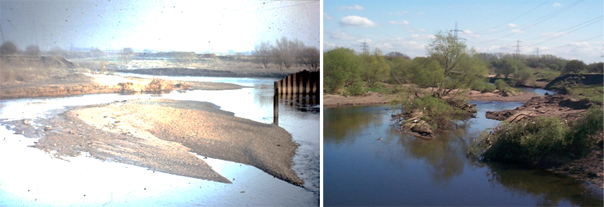

about the writer
Pete Frost
Pete Frost is Natural Resources Wales Urban Green Infrastructure Advisor. His work is to find ways to ensure there are enough green spaces of the right kinds in the right places to make Wales’ towns and cities better places for people and nature.
Pete Frost
Natural Resources Wales is building a Geographic Information System (GIS) data set to show all green space in Wales. When complete, it will show where green space exists in urban areas, if it is likely to be natural and whether people are likely to be able to get into it. It is based on mapping done by the Ordnance Survey and includes data from local authority surveys. The data set will only be available to public bodies until its contents have been checked by the local authorities who contributed to it.
The blend of accurate base mapping from the Ordnance Survey and local intelligence from local authorities should enable public bodies to get a more detailed picture of where people can actually go to experience nature near to where they live.
The All Wales Green Space Data Set is likely to become even more important to help show where green space can be used to take healthy recreation during times of social distancing, which may last until the discovery of an effective treatment for Covid-19 or the eventual development of a vaccine. The data set will also inform Welsh Planning Policy, and in particular the statutory Green Infrastructure Plans which all local authorities must produce. The data set will enable local authorities to identify opportunities to improve green space quality or provision to ameliorate the effects of climate change and provide habitats for biodiversity.


about the writer
David Haley
David makes art with ecology, to inquire and learn. He researches, publishes, and works internationally with ecosystems and their inhabitants, using images, poetic texts, walking and sculptural installations to generate dialogues that question climate change, species extinction, urban development, the nature of water transdisciplinarity and ecopedagogy for ‘capable futures’.
David Haley
This research focuses on critical recovery through “ecopedagogy”. It emerged from questioning the effects of long-term trauma on communities experiencing peristaltic coastal and riverine flood disasters, and includes species and cultural extinction. In other words, considering recovery as a complex evolutionary dynamic of destruction and creation. Through critical dialogues the intention is to enable people to learn for themselves how to move from being victims to survivors and from survivors to proactive, self-determined, ecologically resilient societies. These issues have become starkly in focus as we consider the new normal of post-Covid-19.

Adopting a whole systems approach, the project will conduct workshops and interviews with each community of stakeholders to learn, analyse, and assess their present state of confidence, vulnerability, resilience and futures prospects. The workshops will incorporate creative arts processes to disrupt people’s “normal” perception and cognition and thereby transform their perspectives and narratives of how they live with the world.
In addition to creative trauma and bereavement therapy, the sample communities will engage in initiating their own emancipatory economic, life support systems through full community participation across business and the third sector. As disasters bring opportunities as well as danger, this paradox may enable communities to become self-determined by generating their creative cultures of resilience. Integral to the whole systems approach for addressing the climate emergency and extinction crisis, each urban terrain, their human and other than human communities will be considered as distinct ecosystems.

about the writer
Jane Houghton
Jane is now Project Manager at Natural England for the development of a new National Green Infrastructure Standards Framework which is a commitment in the Government’s 25 Year Environment Plan to green our towns and cities to deliver multiple benefits for health and wellbeing, climate resilience and prosperity. She has wide experience of advising on and managing green infrastructure in central and local government.
Jane Houghton
Natural England and Defra are developing a national Framework of Green Infrastructure Standards, which is a commitment in the Government’s 25-year Environment Plan. It aims to deliver more good quality, interconnected GI, at a local and landscape scale, and
mainstream GI as essential infrastructure in place-making and in associated planning and land use decisions:
• provide the multiple benefits communities need and want, consistently across England, and in particular for disadvantaged urban populations;
• help the country recover from Covid-19 by ensuring good quality green infrastructure is available to all.

The Framework of Green Infrastructure Standards comprises principles of good GI, benchmarks, guidance and mapping of GI across England, to be made available through a web- portal, and for incorporation into national planning guidance, initially, with a longer-term aim for it to be incorporated into the National Planning Policy Framework. Natural England is leading a project to develop, test and refine the Standards and Guidance for soft launch in 2021.
We are looking at opportunities to work in collaboration with local authorities and others for urban nature recovery, green streets, and addressing inequalities in access and health. To address the inequalities in access to greenspace highlighted by Covid-19, we are developing additional maps to show where high numbers of homes that do not have access to private gardens are located in areas of greenspace deficiency, and areas of health inequalities. This will enable greenspace providers to identify and plan how to address the inequalities in access. In terms of evidence, we have added questions to our ongoing People and Nature Public Survey to capture visiting / engagement with greenspaces and with nature in response to Covid-19 measures. We are also in discussion with several universities about research to understand the role of nature during Covid-19 measures, its impact on health and wellbeing, and analysis in relation to inequalities in health and inequalities in access to greenspace.

about the writer
Philip James
Philip leads the Ecosystems and Environment Research Centre within the School of Environment and Life Sciences at the University of Salford, UK. Researchers in this centre investigate how the processes of natural variability and man-made change work.
Philip James
Ignition to develop innovative financing solutions for investment in Greater Manchester’s natural environment. This investment will help to build the city region’s ability to adapt to the increasingly extreme impacts of climate change.
Working with nature, solutions such as rain gardens, street trees, green roofs and walls, and development of green spaces can help tackle socio-environmental challenges including increases in flooding events, water security, air quality, biodiversity and human health and wellbeing.

IGNTION includes establishing a Living Laboratory at the University of Salford monitoring and demonstrating the performance of Nature Based Solutions designed to combat climate change.
All construction work on the University Campus has been halted and as a result the installation of the nature-based solutions has fallen behind the planned schedule. Tenders have been let for the installation of the green wall, green roof, street trees and rain garden. Construction work will commence after the re-opening of the campus.
The impact is a delay of collecting data.

about the writer
Sarah Lindley
Sarah is a quantitative geographer specializing in the use of geospatial analysis to understand the outcomes of human-environment interactions. Her main research interests are urban air pollution, climate adaptation and urban ecosystem services and are motivated by the need to develop sustainable responses to current and future environmental challenges.
Sarah Lindley

In the wake of the response to COVID-19 and restrictions on movement, many more people now appreciate just how important local urban green and blue spaces are for the health and wellbeing of urban populations. Indeed, the importance of those spaces has itself increased. However, not everyone can benefit. There are marked differences in neighbourhood provision of green and blue space according to age and income, and people’s local health status is clearly linked to the quantity, quality and proximity of green and blue spaces (Dennis et al., 2020). It is not only the amount of cover which is important but also its quality (e.g. characteristics like structural diversity which influence the effectiveness of local environmental regulation such as air quality, temperature and noise).
Although the current the current pandemic has led to a reduction in some urban environmental hazards, we must also think about climate-related events like heat waves might increase risks for people living in highly built up areas, with no private garden space and fewer opportunities to access good quality spaces. We must consider how our efforts. My work will be continuing to explore these issues, helping to understand how biodiversity, climate and urban environments are central to health and wellbeing, especially in the context of our ageing population.

about the writer
Joe Ravetz
Joe is the Co-Director of the Collaboratory for Urban Resilience & Energy at the Manchester Urban Institute, University of Manchester, UK. He has pioneered the art of strategic thinking for sustainable cities and regions, which brings together environment-climate policy, urban planning and design, new economics and governance, innovation and futures studies, systems thinking and complexity science.
Joe Ravetz
The impact of climate change on cities is well known —but the “peri-urban” hinterland, the areas between and around cities, is often overlooked. Yet the peri-urban contains most urban growth, and also the greatest impact on local and global environments. The peri-urban also is a resource for climate adaptation & ecosystem services.

The PERI-CENE project will provide the first ever comprehensive assessment of global peri-urbanisation, with its climate impacts, risks and vulnerabilities. It will host the co-creation of forward pathways, in a Policy Lab of 21 city-regions from around the world, along with in-depth case studies in Chennai (India), and Manchester (UK).
PERI-CENE is a pilot project, paving the way for more detailed follow up. It builds on recent EU projects and data resources, and on existing clusters of expertise in Chennai, Manchester and Stockholm. We aim to set new agendas for peri-urban and climate change, in theory and practice, at local and global levels
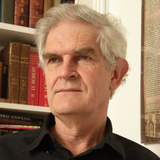
about the writer
Graham Rook
Graham Rook is an immunologist and emeritus professor of medical microbiology at UCL (University college London). He is interested in the role of contact with the microorganisms from the natural environment in educating and regulating the immune system.
Graham A.W. Rook
The repertoire and regulatory settings of the immune system of each new individual are set up in early life using information from the environment into which the individual is born and will therefore need to confront. Thus, in early life the immune system requires inputs of data and signals from the microbiota of the natural environment as well as from the organisms that colonise the gut and other tissues. Lack of these inputs compromises the efficacy, and above all, the regulation of the immune system, leading to an increased prevalence of immunoregulatory disorders such as allergies and autoimmunity, as well as to long-term consequences of chronic background inflammation such as metabolic, vascular and psychiatric disorders. My current efforts are aimed at understanding within a Darwinian and urban/rural framework, the molecular nature of the microbial signals that we require, and their precise mechanisms of action.

The microbiota of the modern home bears little resemblance to that of the shelters of our evolutionary past, or of homes built until recently with natural products (timber, thatch, mud, dung-based render). Moreover, the microbiota of the natural environment is increasingly distorted by industrial and agrochemical pollution, monoculture and climate change. The resulting species losses and distortions lead to ecosystem instabilities. Meanwhile the creation of large unnatural animal communities by industrial farming and “wet” markets encourages the evolution of novel pathogens such as SARS-CoV-2. We are then obliged to confront these pathogens with immune systems that have not received, in early life, the inputs that are required to optimise the immune system’s repertoire and regulatory mechanisms. It will be important to learn how immune repertoire, immunoregulation and gut microbiota relate to resistance versus susceptibility to the virus, and the possible relevance of microbial inputs to urban versus rural susceptibility.

about the writer
Richard Salisbury
Richard is the neighbourhood engagement officer for Manchester City Council at the Chorlton Water Park in the Mersey Valley.
Richard Salisbury
My work also involves a lot of public meetings with our “friends of the park” group to discuss issues as site improvements. I am also required to regularly meet on site with contractors to discuss on site operations and infrastructure improvements.
In the short term, due to the social distancing measures, all practical volunteering has come to a halt. This is having an impact on conservation and some areas are becoming undermanaged. The adverse impacts if this continues would involve scrub taking over sensitive areas of reed beds and grasslands. Also, invasive species such as Himalayan Balsam which we usually remove could get a foot hold in new areas. I am hopeful that volunteering will resume eventually but with social distancing measures in place. There may also be some benefits to wildlife. For example, currently mowing of football pitches and amenity grasslands has been halted in certain areas. This could lead to greater biodiversity
All events and activities in parks are currently cancelled. I imagine these will be gradually be brought back but with some social distancing in place. All community meetings are also cancelled but there is a possibility these could be conducted through video meetings in the short term. Essential contractor works are currently continuing but with social distancing.
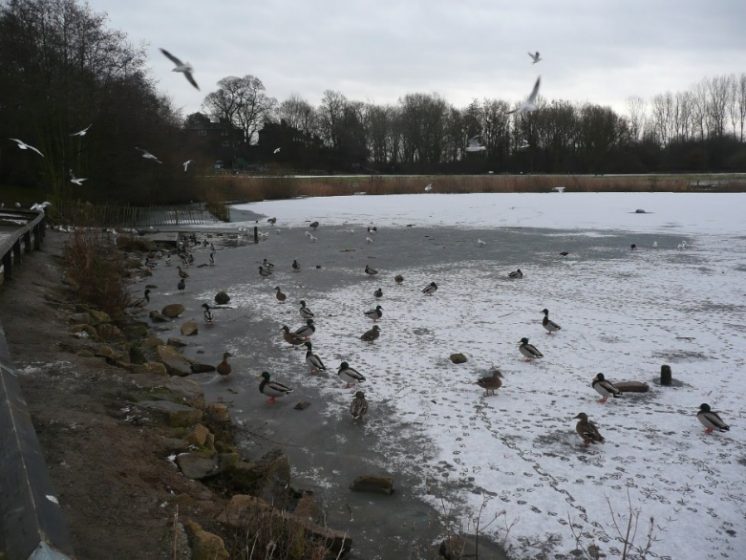
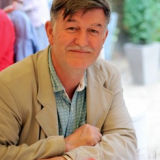
about the writer
Alan Scott
Alan has been active in the urban ecology movement in the UK for over 35 years. For the last 24 years he has had his own company (Complete Ecology) which specializes in management plans for wildlife sites and practical conservation management, particularly in urban areas.
Alan Scottt

The lockdown has stopped all our work and all staff are furloughed. Fortunately, it is our quiet time of year (bird breeding, etc) and most work can be postponed. The challenge will be to work and travel whilst maintaining social distancing. Suitable risk assessment and safety precautions will hopefully overcome this. The longer term however is more of a problem as many of our clients will be short of funds and may see other issues as a higher priority.
On the plus side many people have been using open spaces and have started to value them more highly, especially the more natural elements. The challenge facing nature conservation will be to take this increase in interest and turn it into long term support. I feel that we need to emphasis the value of natural ecosystems to combat global warming and the health benefits of natural greenspaces in all our work. It is also useful to look at how changes in management could save costs in what will be very cash strapped times.
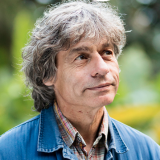
about the writer
Richard Scott
Richard Scott is Director of the National Wildflower Centre at the Eden Project, and delivers creative conservation project work nationally. He is also Chair of the UK Urban Ecology Forum. Richard was chosen as one of 20 individuals for the San Miguel Rich List in 2018, highlighting those who pursue alternative forms of wealth.
Richard Scott
Nature is about opportunity. We are in a game changing moment in history. We need a changing of the guard, and the application of solutions we already know about, and those yet to be discovered, practical solutions that show love and respect for nature in building sustainable futures, and work with culture and social need.
It is about habitat—our own household—75% of humanity is likely to be urban by 2050. At this moment, we must reach to our strengths and experience. Society must not slip back to old ways, and habits. We must reflect a joy for life, showing how to forge real pathways for a “habitat” and a home we are proud of living in. We must reflect biodiversity and the reality of the climate emergency and extinction crisis, and the critical resources of Air, Land and Water, and the biodiversity and culture this brings together.
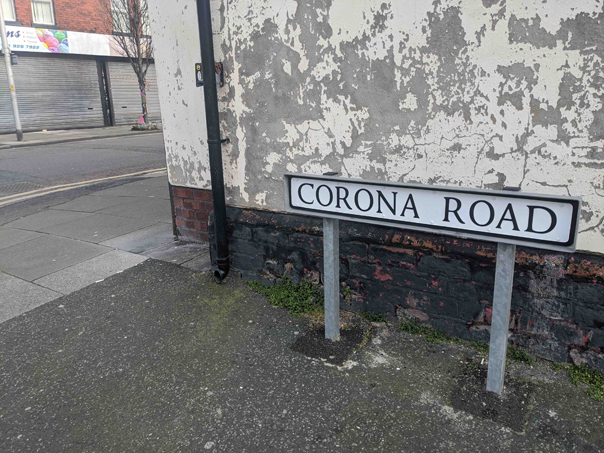 Right now it is important to demonstrate the carbon capture ability of all habitats, it is not just planting trees, it must be mosaics of habitats, which respect soil, both as a resource for food production, but also recycling unproductive urban substrates, for biodiversity and creative conservation. New international standards should combine carbon capture, and biodiversity, and creative conservation delivery, and make it a transformative global movement.
Right now it is important to demonstrate the carbon capture ability of all habitats, it is not just planting trees, it must be mosaics of habitats, which respect soil, both as a resource for food production, but also recycling unproductive urban substrates, for biodiversity and creative conservation. New international standards should combine carbon capture, and biodiversity, and creative conservation delivery, and make it a transformative global movement.
Bringing wildflowers back home, is a simple way to begin new conversations, applying the potential of seed and the purpose of the sower, delivering this joyously with people.
We must be bold and imaginative and use inclusive language in a world desperate for positive futures right now. As David Attenborough said recently to the Landscape Institute (November 2019).
“People have to realise, the world is on our doorstep… we are part of natural systems, and if we wish to to save ourselves we have to save these natural systems”…
“To do his we need to bring people face to face with the beauty and complexity and importance of the natural world …and to bring the realities of the natural world to the understanding and the love of human beings worldwide”.

about the writer
Tim Webb
Tim Webb grew-up working on small farms before turning to environmental journalism and activism. Now Secretary of the UK Urban Ecology Forum and a founder of the National Park City Foundation, he’s worked on coastal realignment projects, species relocations and habitat management.
Tim Webb
After five years of campaigning and endless meetings with ward councillors, community groups, activists and London Mayoral candidates, in July 2019, the capital was declared the world’s first National Park City. Unlike a National Park, it has no planning powers or funding benefits. It is a roots-up movement, a vision and a place to explore. The ambition is to make London, and other cities, greener, healthier and wilder.
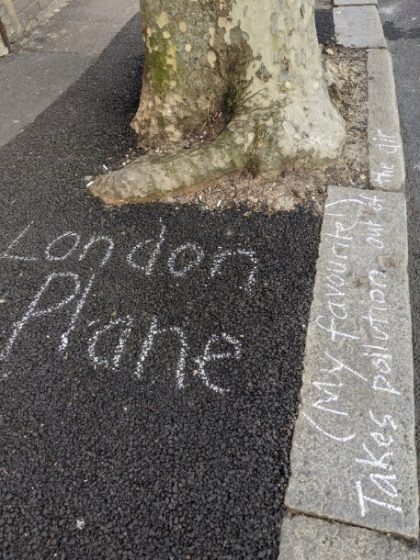
Our growth plan was to celebrate the first anniversary with a series of public events and the launch of a new volunteer force called our Rangers. We’d already secured funding from the outdoor clothing and kit company Timberland, and recruited two volunteer coordinators to deliver our Rangers programme. COVID-19 has made a planned
summer festival of events across the capital impossible. We’d already started our Ranger programme and didn’t want to lose momentum, so decided to push on but with a new twist. Our Rangers are not like traditional rangers, having been recruited for their community engagement skills, whether that was as a rapper, an artist, food grower, bee keeper, teacher or academic. The one common thread is a desire to make society better than it is.
Our coordinators found themselves operating in novel ways. The first full meeting of the fifty plus Rangers was virtual. Everyone contributed. There were some presentations and some obligatory instruction regarding expenses, insurance, health and safety. Everyone got talk about themselves and how they envisioned their inputs contributing to the shared goals of making London greener, healthier and wilder.
The COVID-19 lockdown meant parks had taken on a new importance in society, which should help us in the long term. Somehow.
In mid-May 2020, our Rangers were planning a series of interventions, using digital technology, word of mouth, music and art to engage Londoners in new ways with life in a National Park City. We are rewilding Londoners, re-wiring brains to perceive our built environment as an enhanced natural landscape of mosaic habitats, all interlinked and waiting to be explored on foot, by bicycle and, at some point in the future, by public transport.
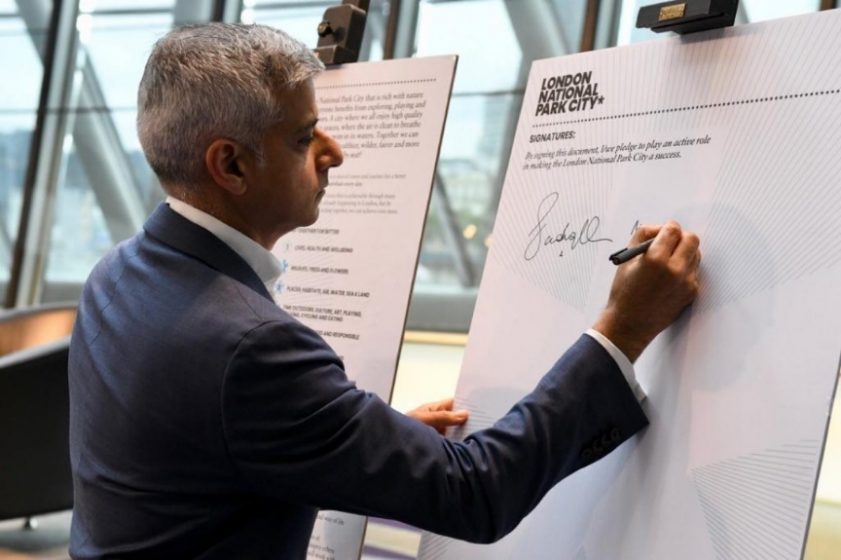
We have mapped the cities’ green and public spaces, adding walks, history, culture and encouragement. A city full of active citizens would be a powerhouse for new green technologies of clean energy, food production, transport, waste management and physically active people. This is becoming reality in London and other urban centres. We’ve even partnered with the official National Parks to ensure connectivity with the wider environment beyond urban fringes.
Our active Schools arm and new Development Forum draw upon expertise from across the built environment. This combination of community, expert and civil input will inform a route map for others, enabling us to fulfil our International goal of having a family of at least 25 National Park Cities by 2025.
The explosion of mutual aid groups witnessed during the COVID-19 outbreak is evidence of strong community spirit. Encouraging that spirit will speed our economic recovery and make cities more resilient against biological, ecological, meteorological, economic, civil or political strife.
about the writer
Mike Wells
Dr Mike Wells FCIEEM is a published ecological consultant ecologist, ecourbanist and green infrastructure specialist with a global outlook and portfolio of projects.
Mike Wells and Lincoln Garland
Temporarily, the ability to cover all taxa in necessary baseline surveys is being compromised in some instances (e.g. bats in buildings). Some clients have closed down the majority of their construction/onsite operations and progress on planning and design is less rapid because the response time of some Local Authorities and regulators has notably increased.

Several of the wealthier, but still developing, countries are employing overseas expertise in the progressing of a new sustainable and greener urban agenda and are referencing climate change more often in this endeavour.
The to which extent there will be greater tolerance of working remotely on overseas contracts remains to be seen. Many overseas cultures are still deeply-rooted in face-to-face meetings culture.
Globally the effects of isolation in cities on psychological health and wellbeing, particularly for those living in apartments without outdoor space, are likely to increase the drive for the provision of biodiverse and biophilic habitats both in the public and semi-private realm, including on buildings.
The tolerance of the illicit exploitation of wild animals, and purveying of related items alive and dead, both in cities in the developing world and within certain cultures where such practices are currently prevalent, may reduce as a result of both internal and international pressure.
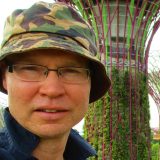
about the writer
Lincoln Garland
Lincoln is Associate Director at Biodiversity by Design, an environmental consultancy in the UK. Lincoln has been working as an ecologist and eco-urbanist in consultancy, academia and for wildlife NGOs for more than 25 years. He has a particular interest in developing sustainable ecologically informed landscape-scale approaches to development and land management, with a particular emphasis on the urban realm and ecotourism. Contact Lincoln by email: [email protected]

about the writer
Phil Wheater
Professor Emeritus of Environmental and Geographical Sciences, Manchester Metropolitan University, UK, Philip is a leading urban ecologist in the UK. Philip has had a major impact on teaching and research on the environment, particularly with reference to urban areas.
Phil Wheater
Currently the main project has achieved a number of milestones. The literature review has been developed and is now going through a series of iterations and refinements. Both planned workshops (one for policy makers and one for operational managers) have been completed and the results fed back to participants and are due to be appraised shortly. The case studies are progressing (albeit at a slower pace than before). The COVID-19 pandemic has interrupted the flow of the rest of the work in two main ways: through social distancing preventing planned face-face meetings; and because the Public Health staff involved in the project have other priorities at present.
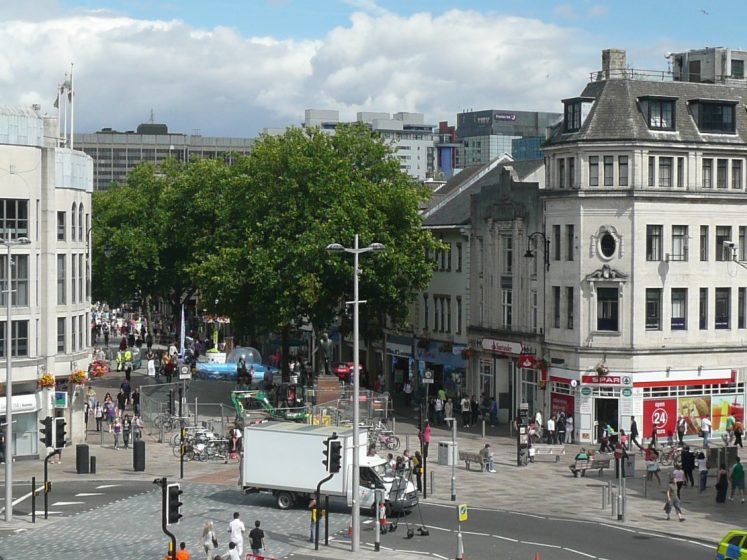
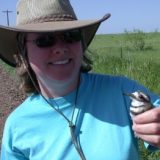
about the writer
Nancy McIntyre
Nancy is a landscape ecologist and Professor in the Department of Biological Sciences at Texas Tech University. Her research focuses on how land conversion affects animals, particularly birds and insects.
Nancy E. McIntyre
My university placed some restrictions on research expenditures and travel, initially delaying our project; some of our study sites remained closed to access.
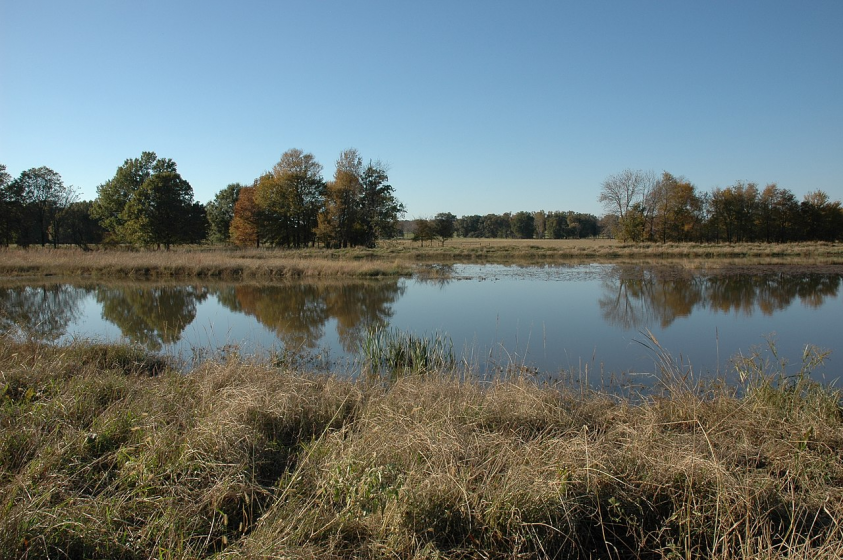
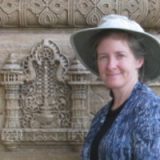
about the writer
Monica Smith
Monica Smith is an archaeologist whose principal research interests are the human interaction with material culture, urbanism as a long-term human phenomenon, and the development of social complexity.
Monica L. Smith
Collaborating with my Indian colleague Prof. R.K. Mohanty of Deccan College (Pune), our archaeological research of the past 15 years has focused on the ancient city of Sisupalgarh in eastern India. Most recently we have used our data to evaluate urban-hinterland food networks; the management of hinterland excess water at times of both predictable seasonal monsoon flooding and occasional exceptional cyclone flooding. As an outgrowth of that site-specific research, I have been collecting data from site reports all around the globe about the extent to which ancient cities were subjected to flooding on a regular basis, and the implications of those floods for urban management and the demonstration of “good governance” through mitigation and prevention efforts.
Library-based work is severely curtailed at the moment; once the current labor-intensive term of online teaching has been finished, I may try to use publicly available databases such as the Hathitrust library to fill in gaps in the database of global urban flooding at archaeological sites (though archaeological site reports, as bulky and arcane documents, are probably among the last items to be scanned in research libraries!).
A more promising angle of research will be experienced by the graduate students working with me who are focused on the role of animals in ancient urban contexts. There are anecdotal media reports of wild animals re-integrating into city margins, which seemingly demonstrates resilience and niche-construction although this remains to be studied in more detail and with an eye towards factors such as neural plasticity, different species’ behavioural patterns, and the long-term effects of urban animal behaviour after people start to move around in cities in greater numbers when the lockdown is over.
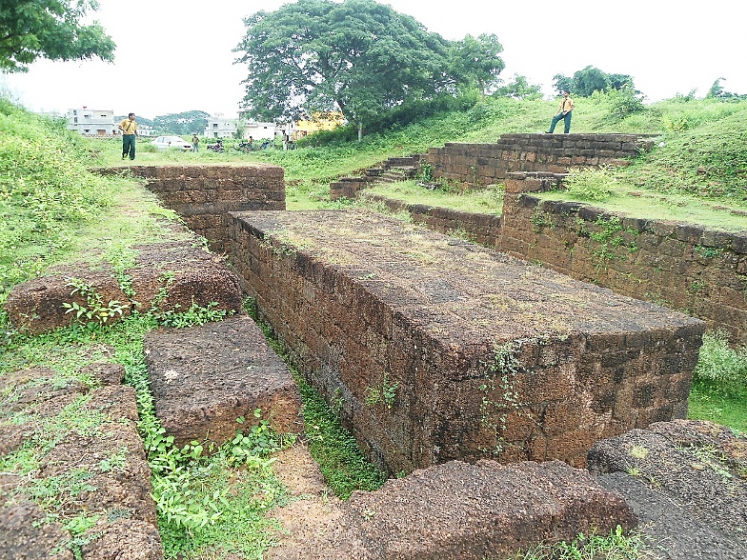
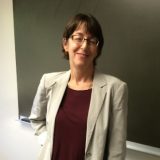
about the writer
Miriam Stark
Miriam Stark works at the University of Hawai’i in the USA where she is Professor of Anthropology and Director for the Center for Southeast Asian Studies. With a Masters and PhD degree in Anthropological Archaeology, Miriam has worked in Southeast Asia for more than 25 years.
Miriam Stark
Our planned 2020 archaeological fieldwork was cancelled, which gives us time to explore and write about resilience strategies in historical responses to climate change in the region. New opportunities that we hope will open up include collaborations with conservation and climate scientists, both to deepen our understanding of long-term climate records for the Lower Mekong, to build a richer database of the region’s wetland fauna and how it changed through time, and to explore strategies that premodern Khmers used in times of climatic and environmental stress. Archaeological work with conservation scientists has begun to yield productive results in mainland Southeast Asia (e.g., Suraprasit et al. 2020 https://doi.org/10.3389/fevo.2020.00067), and we see great potential for extending such work to include riverine species now under threat by Mekong River dam projects. Studying archaeological collections like fishbones could provide a critical baseline for research on environmental and species change.
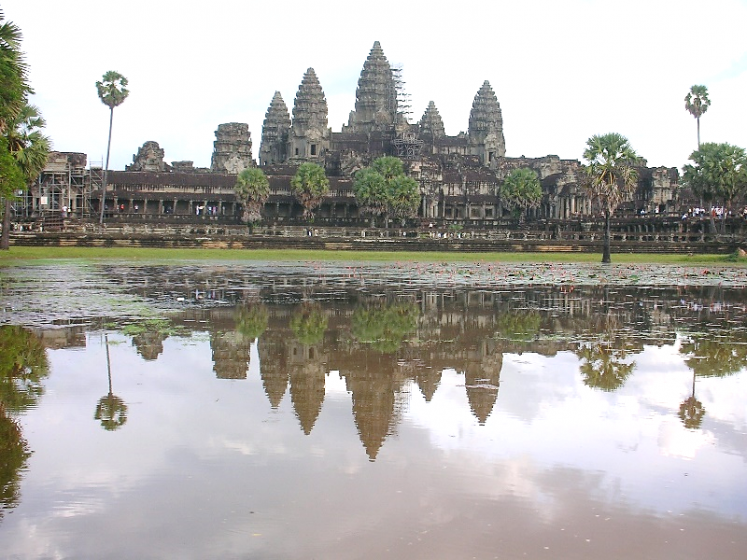
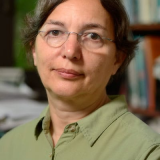
about the writer
Katalin Szlavecz
Katalin Szlavecz is Research Professor, Morton K. Blaustein Department of Earth and Planetary Sciences, Johns Hopkins University, Baltimore, USA. Her research includes study of the diversity and ecology of soil invertebrates, soil biogeochemical cycling, urban ecosystems, and invasive species. She is a CoPI of the Baltimore Ecosystem Study LTER.
Katalin Szlavecz
Project 2. This study is a collaboration among scientists in Helsinki, Baltimore and Singapore, the three cities representing different climatic regions and biomes. We are looking at the influence of plant functional types and soil biota on soil derived ecosystem processes. We measure at soil microbial diversity, enzyme activity, decomposition rates and soil nutrient dynamics in old and young urban parks under different trees producing labile and recalcitrant litter types.
Due to COVID-19 pandemic, all field work has been suspended (at least in Baltimore).
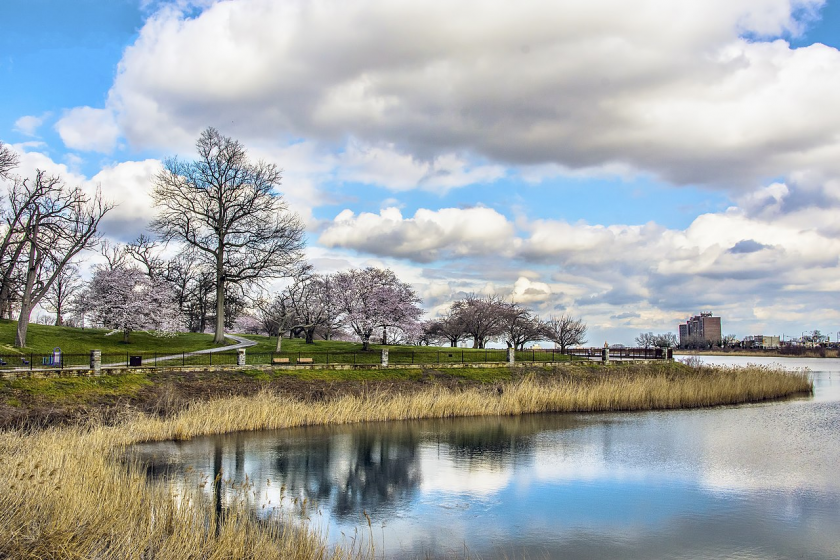
Photo by Bruce Emmerling, Wikimedia Commons
about the writer
Joanne Tippett
Dr Joanne Tippett is a lecturer in Spatial Planning in the School of Environment and Development at the University of Manchester. Action research funded by the Sustainable Consumption Institute and 250 staff in Tesco led to the creation of the RoundView Tool for Sustainability [www.roundview.org].
Joanne Tippett
The heart of my research is applying systems thinking to collaborative system change. I ask: How can we imagine a sustainable, regenerative future; and how can different groups of people work together effectively to realise such visions? This research has led to the development of a physical toolkit for stakeholder and community engagement, called Ketso, which is used in a range of environmental and landscape projects around the world. My current work includes helping to deliver innovative community and school engagement with the Carbon Landscape Project, which aims to restore and connect habitats in the peri-urban landscapes between Manchester and Liverpool (UK). I am also working with the National Trust’s Quarry Bank and artist collectives Future Everything and Invisible Flock, exploring the unintended consequences of the industrial revolution to inspire new thinking about ecological futures. A year-long art installation will hopefully open in this former cotton mill in Autumn 2020.
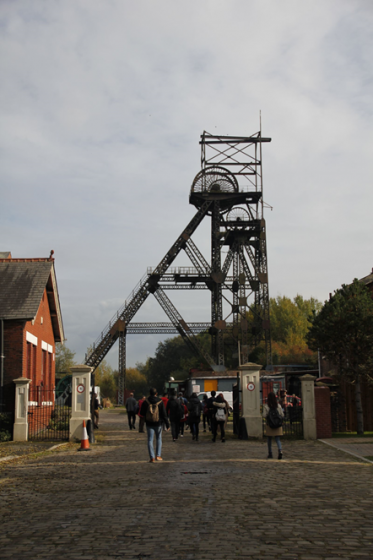
The pandemic has shown that rapid change is possible, and opened a space of opportunity to reimagine our urban spaces and relationship with the natural world. The need for meaningful engagement has never been more important. We will need to harness the ingenuity of communities and those working across all sectors to realise the potential to ‘build back better’. We need to make sure that everyone is heard in this dialogue, to have a better change of building an equitable and fair future. We have been trialling new approaches to engagement, to maximise the value of the hands-on, shared visual language of Ketso in remote workshops. This has required a shift in thinking in the Ketso team, as we have spent decades developing tools for people to build their ideas together in the same physical space. We are looking forward to rolling out this new approach to help deepen and widen the dialogue about the future.
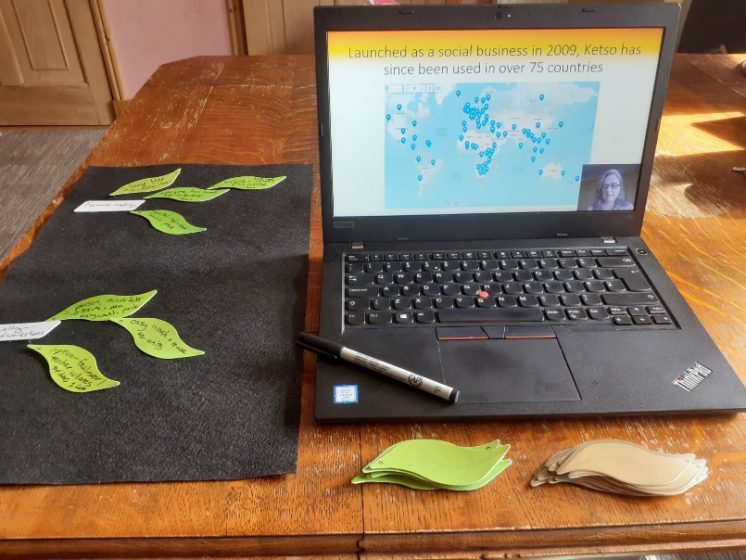


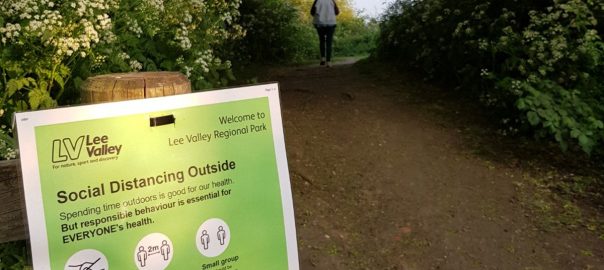



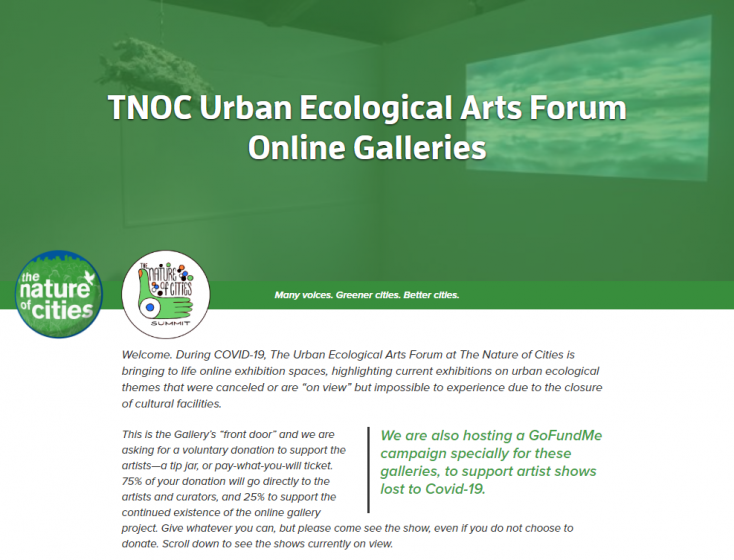
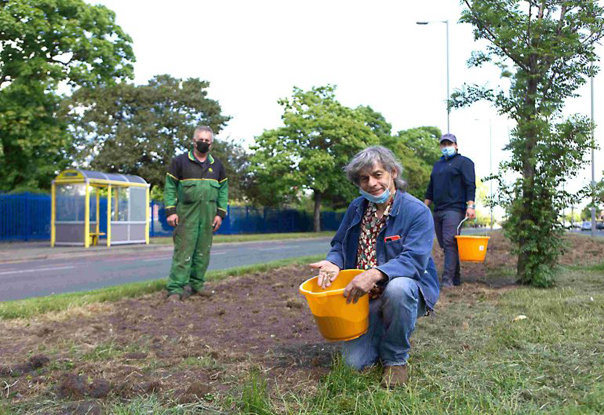





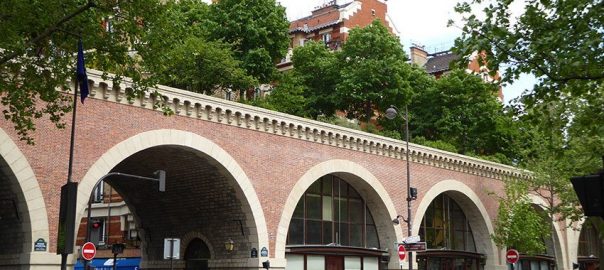
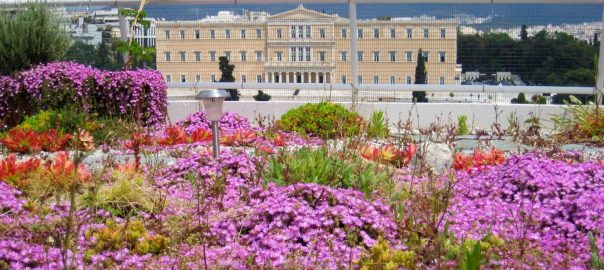
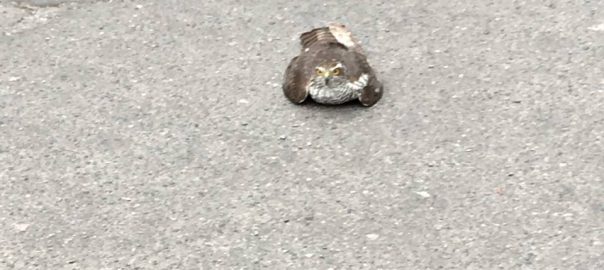
Add a Comment
Join our conversation